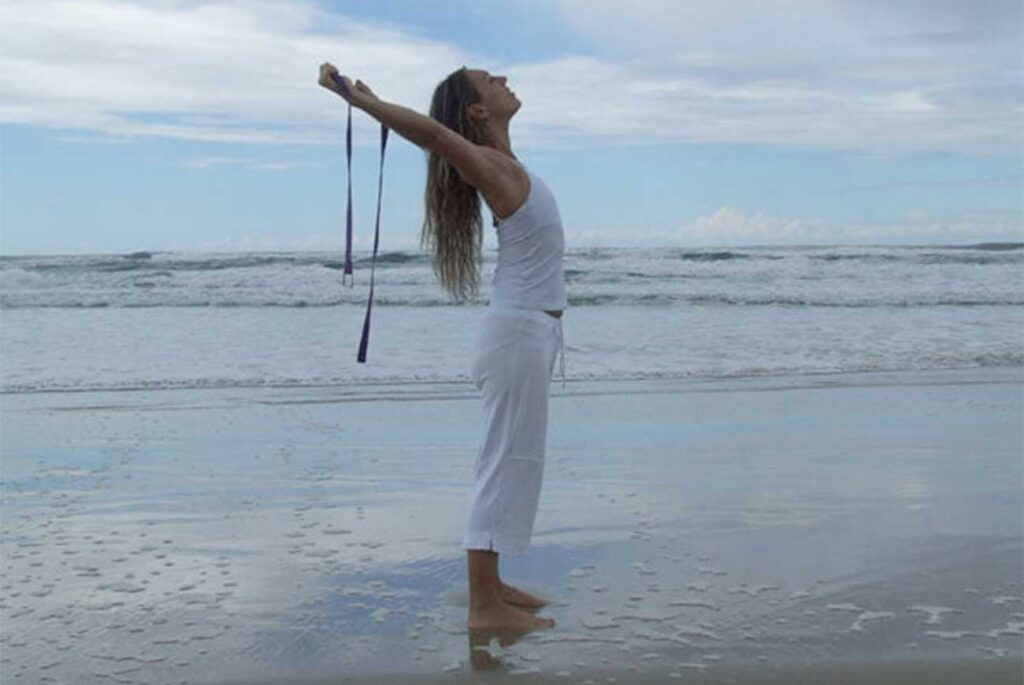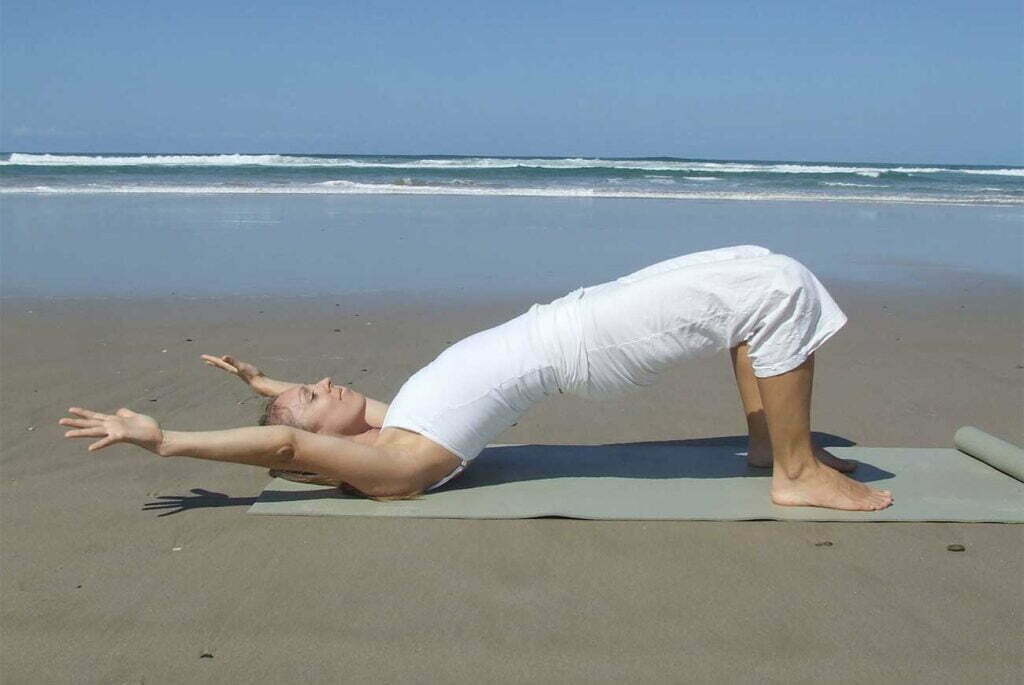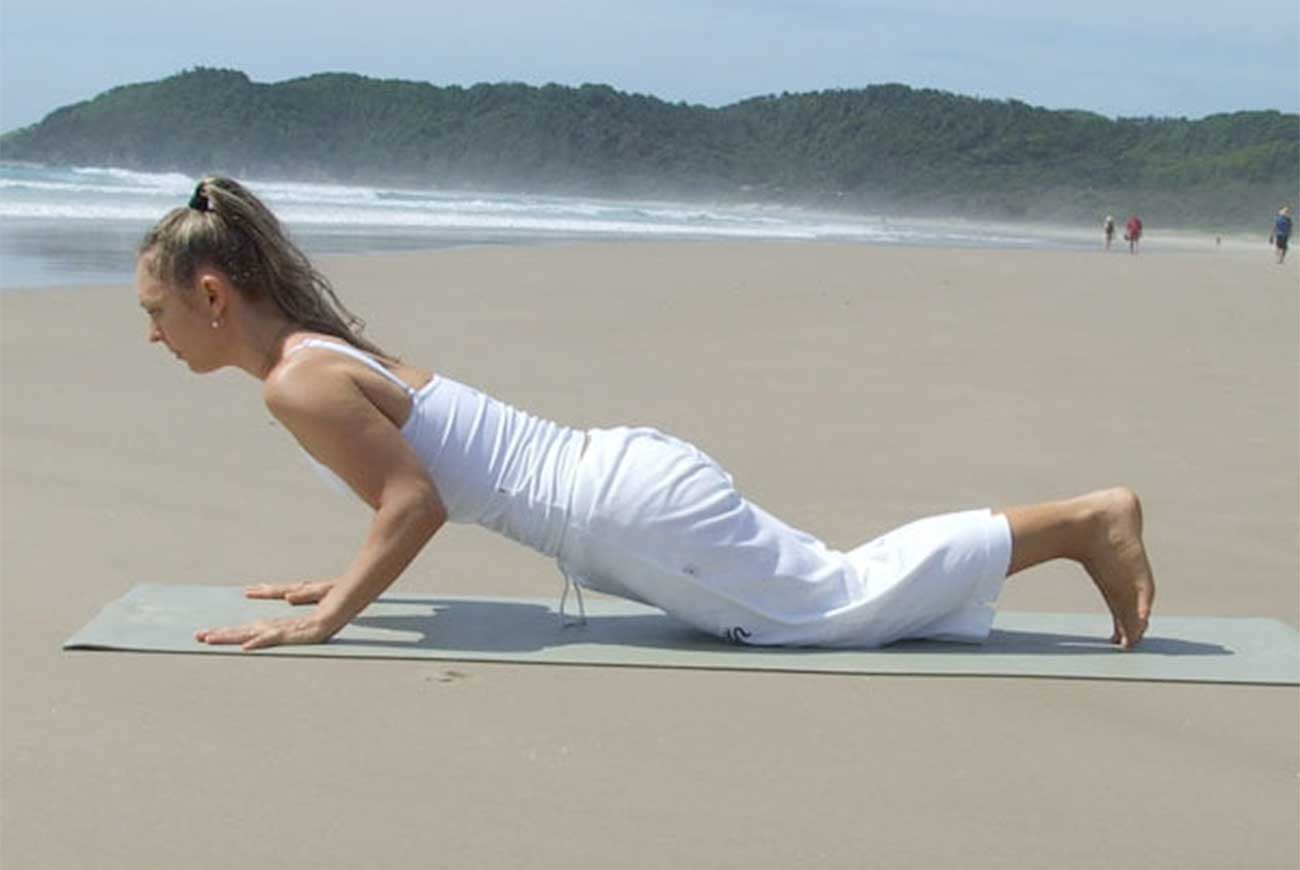Only have 15 minutes? Use these modified Sun Salutes from Flo Fenton to energise and balance the whole system!
“Yoga is far from simply being physical exercises, rather, it is an aid to establishing a new way of life which embraces both inner and outer realities.” – Sw. Satyananda Saraswati, “Asana Pranayama Mudra Bandha”.
The most common ‘excuse’ that I hear from students as to why they let themselves get out of shape, and let go of their yoga practice, is lack of time. We are all increasingly busy, it seems I know even for myself, who has been dedicated to a regular yoga practice for the best part of 25 years, at times, when there is seemingly an endless amount of work to do both in business and at home, and the hours left over for resting and sleeping seem to get eroded away, a long yoga routine can seem to be a luxury that I can’t afford. However, the good news is that we don’t need to have a long time to do an effective yoga practice. The secret to a beneficial practice is regularity, not length; even a 15 minute sequence daily, or at least 4 times a week, will improve your blood flow, flexibility, strength, breathing, and most important of all, provide that little bit of time out from the hectic pace of the rest of the day.
The following modified Sun Salutes provides an all-round workout for the system. Performed in the morning, this sequence will leave you feeling energised and ready to start your day. If evening is your best time for practice, perform the sequence more meditatively and slowly, and rest in between postures if needed. As an evening practice, these postures will stretch out tired muscles and prepare you for sleep.
Hasta Utthanasana – Raised Arms Pose

Stand in a comfortable position with the feet together. Take a full inhalation, and lift the arms up and back. Take your gaze upwards as you lift the arms, and feel the chest open.
Benefits:
This posture emphasises the inhalation, and opens the chest. Over time, this movement help to reverse rounded shoulders and sunken chest, and promotes full oxygenation of the blood.
Uttanasana – Standing Forward Bend

On a full, slow exhalation, fold forward at the hips. Bend the knees if needed (the priority is to get the belly as close to the thighs as possible) and try to avoid rounding the lower back.
Benefits:
This posture emphasises the exhalation, which promotes elimination of wastes and toxins from the digestive system and the lungs. The back of the whole body is stretched whilst the abdominal organs are massaged.
Ashwa Sanchalasana – Equestrian Pose

Step the right foot far back. As you inhale lift the chest.
Benefits:
Opens the groin and stretches the external hip rotator muscles, an important part of good muscle balance.
Adho Mukha Svanasana – Downward Facing Dog Pose

Step the left foot back, and lift the hips. Let the head drop. Take the feet to hip width apart and the hands to shoulder width apart. Try to relax the back of the neck and broaden the space between the shoulder blades. Try to maintain the natural curves of the spine as much as possible (upper back broad, shoulders un-hunched, and lower back in its natural hollow) with a straight line running from head to tail.
Take 5 long slow breaths here.
Benefits:
Almost a whole practice in itself, this posture lengthens the hamstrings, stretches the hip rotator muscles, opens the shoulders and chest and builds upper body strength. Also helps to strengthen the heart muscle and promote full, deep breathing.
Note: This posture takes a lifetime to perfect; bend the knees and lift the heels if the hamstrings are tight (belly close to thighs is the priority) and rest if needed.
Ardha Kumbhakasana to Ardha Chaturanga Dandasana – Half Plank to Half Four Limbed Staff Pose

From downward dog, step the feet together, and then step them a few inches back. Inhale as you bend the knees onto the mat. Exhale as you bring the shoulders above the wrists. You should now have a straight line from the shoulders to the knees down the side body, and arms straight (you are now in half plank). Inhale as you push the mat away to lift the chest and broaden through the upper back. Exhale as you bend the elbows slowly and tightly inwards (half chaturanga as shown).
Benefits:
Half plank is a fantastic core strength and shoulder strengthening pose. It prepares you for full plank (with legs straight.) Half chatturangah also improves core, lower back and upper body strength, and strongly activates shoulders and triceps, giving that lean toned look to the arms that we all love!
Bhujangasana – Cobra Pose

Come all the way down onto your abdomen. Inhale as you slowly ‘peel’ your front body away from the floor. Try to use your back strength (not your arm strength) to do the lifting!
Benefits:
One of the best lower back strength postures, if done slowly and mindfully, cobra pose also tones and balances the adrenals and improves elimination of toxins from the gut.
Adho Mukha Svanasana – Downward Facing Dog Pose

From cobra, roll back down onto the mat. Inhale press up strongly back to hands and knees. Tuck the toes under. As you exhale, lift the tailbone up and back. Move slowly back into your downward dog. Try to maintain the natural curves of the spine as much as possible (upper back broad, shoulders un-hunched, and lower back in its natural hollow) with a straight line running from head to tail.
Ashwa Sanchalasana – Equestrian Pose

On an inhalation, step the right foot forward and return to the hip stretch.
Uttanasana – Standing Forward Bend

On an exhalation, step the left foot forward to meet the right and fold into the standing forward bend.
Hasta Utthanasana – Raised Arms Pose

Inhale as you lift the arms up and back.
Tadasana – Mountain Pose

Exhale as you lower the arms.
Then repeat the whole sequence, stepping the left foot back at no. 3, and the left foot forward at No. 8.
This is one round.
If time and energy permits, repeat once, or twice more.
Rest in Savasana (lying on the back with the eyes closed) for 2 minutes after completion.


